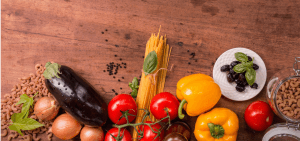The Health Benefits of Quinces
Quinces are laden with Vitamin A, Vitamin C, B-complex vitamins, calcium, copper, folate, iron, magnesium, pectin fibre, phosphorous, potassium, poly-phenolic anti-oxidants, selenium, tannins including catechin and epicatechin and zinc.
These sweet, delicious and nutritious distant cousins of apples and pears have immeasurable health benefits including but not limited to protection against and treatment of the following.
Anemia The quince’s wealth of iron can help prevent anemia.
Anti-cancer properties Vitamin’s A and C and other poly-phenolic anti-oxidants remove free radicals from the body and suppress various cancers including those of the esophagus, oral cavity, lungs, pancreas, rectum and stomach. Folate seems to have some effectiveness against cervical cancer. Tannins found in quince pulp bind to harmful toxins in the colon, which can prevent colo-rectal cancer .
Anti-inflammatory abilities Vitamin C is an anti-inflammatory agent and can help control arthritis and asthma.
Bone & teeth health Potassium preserves calcium in the bones and increases bone density and strength. Calcium prevents osteoporosis. Vitamin C is essential for healthy gums.
Colon health Tannins protect the mucous membranes from IBD, or inflammatory bowel disease and diverticulitis.
Digestive health Quince aids in digestion and may help prevent peptic ulcers. Quince is a terrific diuretic. Quince also works wonders to relieve colitis, constipation, diarrhea, intestinal infections, nausea and vomiting. B-complex vitamins maintain healthy mucous membranes in the digestive tract.
Eye health Vitamin A maintains healthy eye tissue, promotes higher visual acuity and protects against age-related macular degeneration.
Heart health Pectin fibre and tannins both lower LDL aka “bad cholesterol.” Lowering cholesterol reduces the risk of coronary disease and stroke. Potassium lowers blood pressure. Magnesium regulates the pumping of the heart and relaxes blood vessels.
Immune system health Quince has remarkable anti-bacterial and anti-viral properties. Vitamin C is an exemplary immune system booster, which can fight off and lessen the symptoms of numerous diseases, infections and viruses ranging from the common cold to influenza to HIV.
Pregnancy Folate is an essential B vitamin for pregnant women as it promotes healthy growth of the baby and prevents birth defects. Quince has also been shown to alleviate morning sickness.
BEAUTY
Anti-oxidant properties Quince is brimming with Vitamin C and other anti-oxidants, which protect the body from oxidative stress and slow the aging process.
Skin health The anti-oxidants inherent in quince retard the signs of premature aging including fine lines and wrinkles. Quince, when made into a homemade topical mixture, has shown success in treating acne.
WEIGHT LOSS
Nutritional intake Quince is the perfect weight management diet food. It is low in calories (with only 52 per 250mL), low in fat, high in fibre and a natural diuretic. Fibre will keep you regular, which oft results in more steady weight loss.
Cooking
My favorite is poached in red wine, Australian aniseed myrtle, sugar and lemon juice
Blend some poached quinces, banana and oat milk to serve a smoothie bowl for a taste sensation
Another home made quince paste with an array of delectable cheeses
Quinces are delicious roasted with five spice, honey, cloves , Australian native pepper berry
If you are new to quince, try making this supremely easy quince jelly. All you need is 1.6 kilos of washed and quartered quince, 1656.1 mL of water and about 946.35 gms of sugar
Place the quinces in water, cover with water and bring them up to a high, rolling boil. Reduce to simmer, cover and cook for roughly 45 minutes, until the quinces are soft.
Drain the quince and mash them into an almost lumpy apple sauce consistency. A neat trick is using a potato masher.
Strain the pulp using cheesecloth or even a very fine strainer.
Place the juice back into the stockpot, bring to a boil, add the sugar (with the ratio of 207.01 gms of sugar for each 250 mL of juice) and then bring back to a boil until it reaches 104.4 Celsius). Pour the slightly thickened mixture into sealable jars and enjoy for months to come.
Cool fact about Quinces:
“Some historians believe that the quince is the original “forbidden fruit” eaten in the Garden of Eden”







